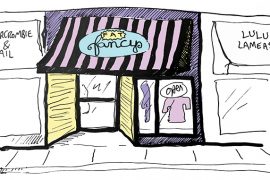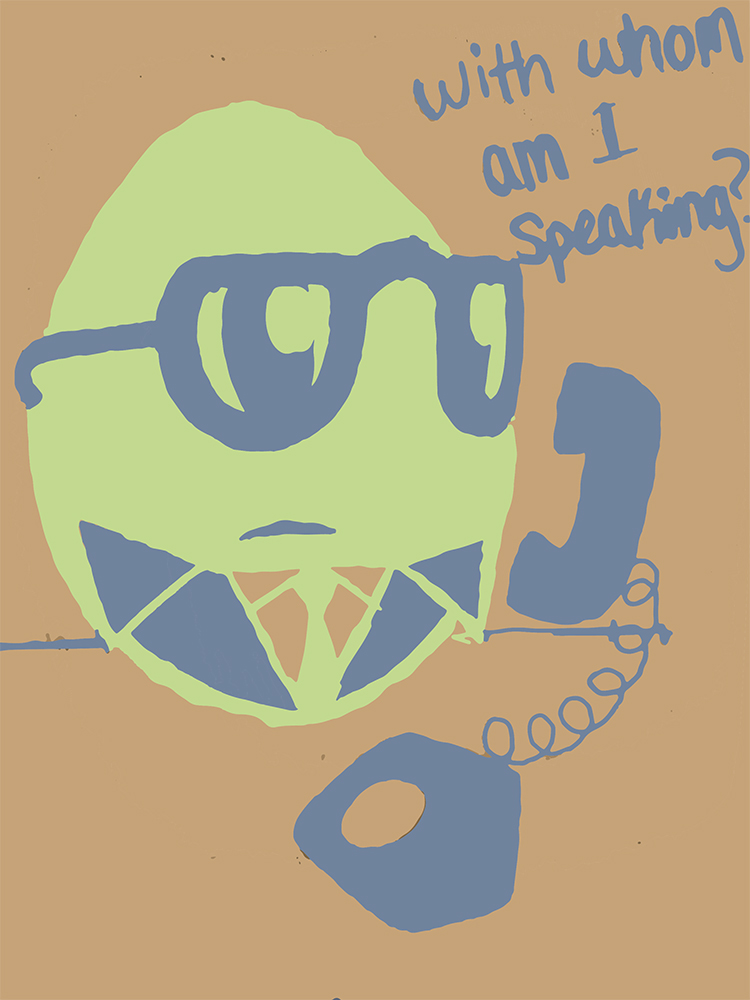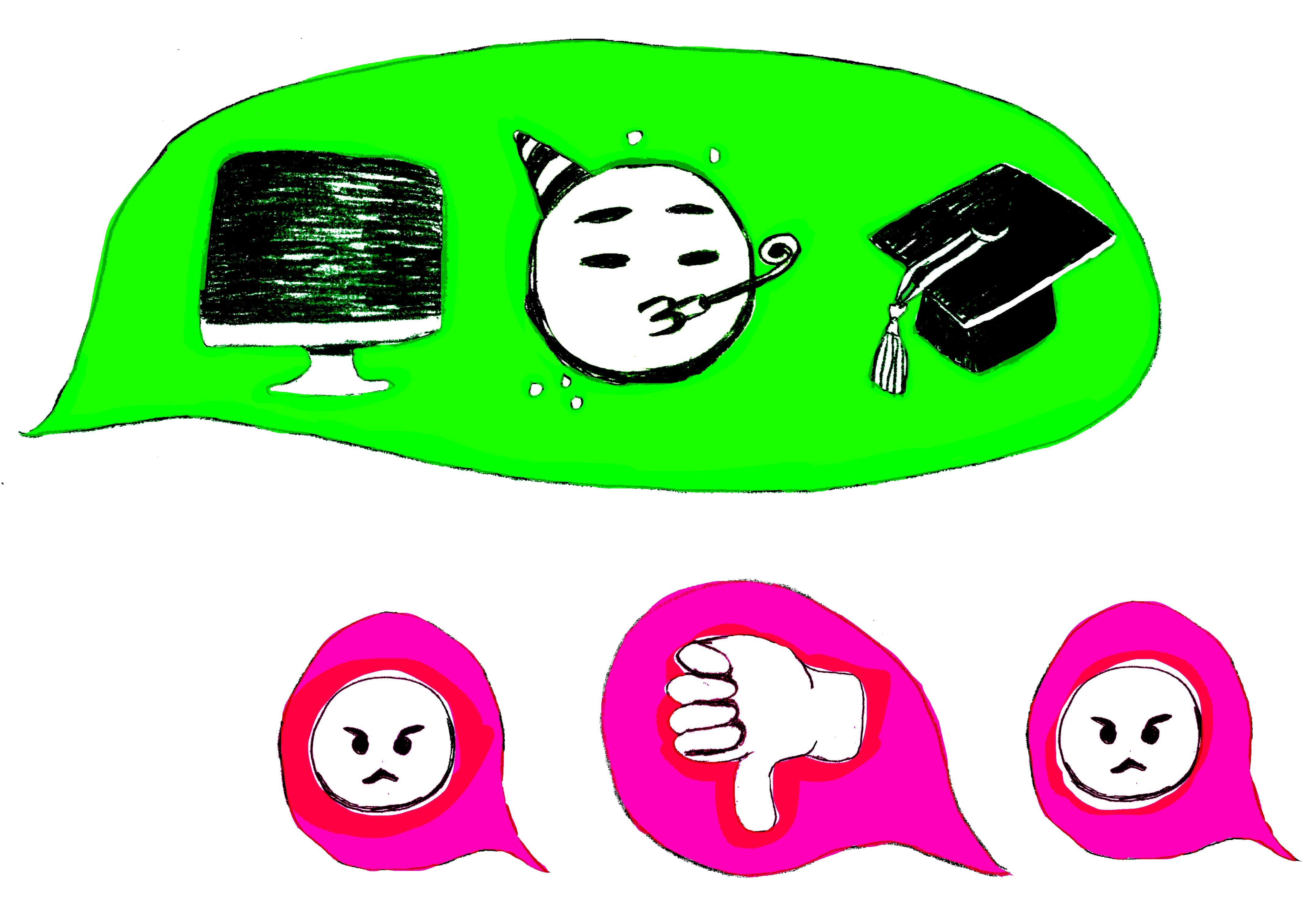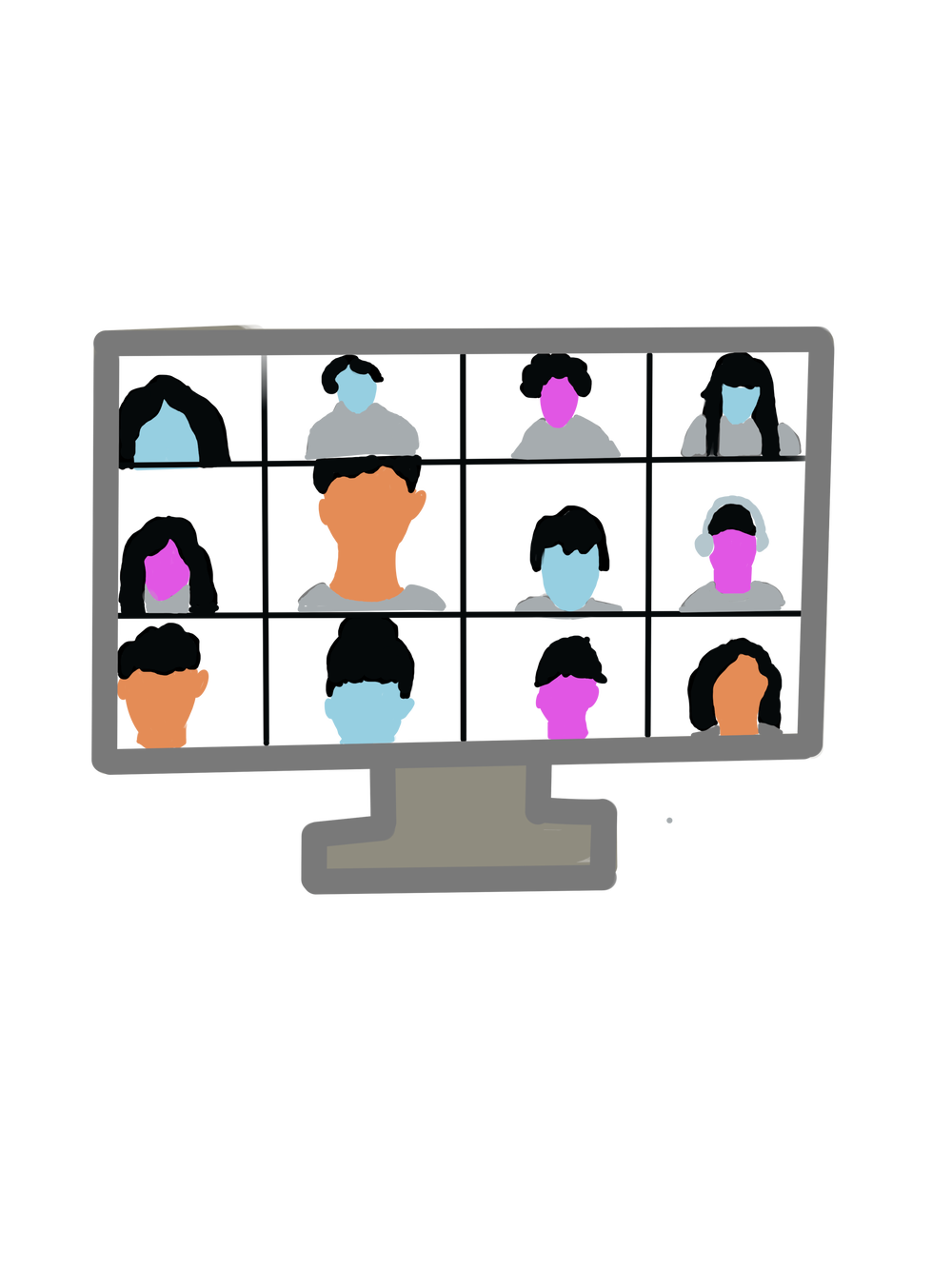Crypto fail memes comically warn about losses to be calculated if one engages. To surmount answers as to how much this justification of hesitation has validity, I write this contemplation. I get it. One is bombarded by hundreds of creative coin titles even at the slight crack in the crypto door. One can be more or less repulsed by a hard to read, over-crazed and half angry crowd. Perceptions also abound that crypto investors are rehashing gold rush-style foundations for a new era by untapping a future-focused pioneering market (with all its digital frontier risk). Some sentiments conclude, “Isn’t it likely the case that depending on what pool in the cess you are exposed to and/or invest in, you could be either at a disadvantage, or a greater disadvantage?” I propose that what is missing from these assessments is the tech-knowledge to understand what is behind the craze, the pseudo-secret choice of each human on earth in this equation, and the reason that all of this has arrived at our doorstep with a cloak of over-hyped immaturity and passé obsessions with hackerdom. I argue that one’s hesitation and search for validity should be a starting point into allowing oneself to deep dive, but safely. To deep dive on information!
The most important thing to understand about the crypto boom, if anything, is what is so ‘amazing’. What REALLY has caused this explosion? What is beyond the obvious anti-establishment narrative. It’s about a little acronym – you can deep dive all day on- that explains the core of network decentralization. (Please always distinguish network decentralization from political decentralization. They are polar opposites.) The little acronym is DLT–which stands for distributed ledger technology. DLT is what blockchain is and consensus is what it does to award you freedom to own value. Its ideological inception was called ‘timestamping’. (Vintage data here, folks, circa 2008). Thanks to the greedy, careless financial decisions made in 2008, however, we now have this technology, brought to you by the most intelligent and heart-felt computer scientists in the world who wanted to create a better world.
So, is DLT/blockchain really revolutionary? I argue, yes. I argue that we really must think about DLT/blockchain as equal to the other historical advancements in human technology. I.E. Iron, Bronze, Immunology, Electricity, Gunpowder, Steam, Electricity… Enigma.
Even if you are not into ‘FOMO’-ing or wondering if the dollar will fall, my argument that “now is the time for you to deep dive“, is worth reading even if you have absolutely zero interest in ‘crypto’–even if you are repulsed by it. When you consider e-governance, there is a very high probability that blockchain/DLT WILL be in your future vis a vis government and global infrastructure. It is worth your time to understand this tech.
Crypto is short for cryptographic. DLT present representations of data realized in immutable blocks in order, or, chain, or, ledger. Blockchain, then, is how the data is chunked and moved and stored. An immutable chain of blocks of data. They are built by both humans and robots and the more scripts written by humans to make bots build them, this ratio increases. Blockhain can replace our entire infrastructure of information into a legally reliable system. Immutable means, ‘cannot’ change. Immutability has been what allows for financial originality of new forms of valid currency to arise out of thin air, based on two characteristics of currency value itself, scarcity and freedom to create. Finance has been the first realization of this technology, likely because money, or value objects representing power, is one of the core tenets of human survival. Distributed ledgers also do not require only financial data storage. Any kind of data can be put on the blockchain. So why does decentralization equal “unsafe” in political rhetoric? One answer is definitely that ‘the difference between decentralized ledgers from traditional centralized ledgers is that a copy of the ledger is distributed to each node on the network, and every node can view, modify and verify [validate] the ledger, which helps ensure trust and transparency.’ But this is not a new concept. Open source software engineering is the Father of decentralization, just much less botched by spam, for the most part. So what would be the mother of decentralization? Democratic free and fair elections and everything democracy is or should be. In the world of blockchain development, decentralization is called trustlessness <<(Polkadot’s Dr. Gavin Wood has been a primary advocate). Trustlessness is part of the decentralized consensus mechanism. Freedom cannot function within the need for a central trust, after all. That is why the facade of freedom is such an irony to have lasted this long. Much of the way we are used to operating is centralized. [Federal Reserve Bank, Facebook, Google, X, etc.] But this would be equated to a blockchain developer as evil because of the centralized system establishing a need to trust. You can read more about consensus mechanisms here.
Therefore, according to blockchain developers, decentralized DLT proposes to be the only safe human direction and the proper maintenance of the world as we know it, or WANT to know it. Free, Fair, Opportune, and Secure. To them, decentralization is not an option, it is a must. [ Think “Tron” and “Ready Player One”.] Here are some incredible papers on blockchain from PHD students around the globe. Many academic projects at MIT have been launched to test ways to protect tokenization from all vulnerabilities and optimize the beauty of this technology into human comfort zones and productivity.
The state of crypto on the developer front can be aptly summed up by the words of the co-founder of Ethereum, Vitalik Buterin, in a 2023 interview in Budapest, saying,
“…[There is] still a way to go in terms of getting actually decentralized things and not people just interacting with crypto through centralized exchange wallets (CEX), but, you know, that’s a challenge everywhere and that’s like fair because the blockchains have not been scalable enough or usable enough and that’s just something the space just needs to improve on.” Similarly, if you direct your sights to the other founder of Ethereum and the founder of Polkadot, Dr. Gavin Wood, you will find extreme pro-action…and a phenomenon building.
In the US and in the EU, much legislation has been passed, much of it centralized in focus, in the name of safety and security, and otherwise. [I.E. Stablecoins]. Decentralized Innovation realities have not been largely exposed, debated fairly, and much less celebrated en masse as they deserve to be–at least not in the US. The centralized narratives of Yellen, Warren and Ginsler have scrambled to ensure control. The snuffed voices of decentralized freedom in the US regarding decentralized ledger technology have been, among others, Tom Emmer, who’s speaker-hood would have changed popular ignorance on the subject, and similarly, Perianne Boring of the Digital Chamber of Commerce.
Jump in!
My first deep dive was a three month intense craze in 2018. It then took a long plateau of experimentation and observation of the ‘space’ with actual minimal investing. The wealth of awareness was worth it. I hear it’s different for everyone, but don’t get frustrated if this takes you a while. Just keep pushing.
To begin your deep dive, first, let’s talk about the new buzz word: tokenization, and then I suggest 8 other ideas…but let your dive take you where it does. Don’t forget to bookmark. It’s going to be a long (but important) ride.
- Understand Tokenization
Bring your attention to this article by Polygon. Until March 2023, mutual funds were traditionally backed by Franklin Templeton. They, alongside a dozen other pioneering companies have taken the jump into tokens and are leading the uncharted fintech territory in tokenization movement referencing anything they can to establish these pioneering tokens. I.E. bonds, repos, corporate bonds, shares, real estate, treasury bills, gold, private equity, and even soybean, corn, wheat and carbon credits. Public trading for Franklin Templetons’ Token, “Benji”, for example, opened last month alongside the bitcoin halving event, touting, “The fund invests at least 99.5% of its total assets in U.S. government securities, cash and repurchase agreements collateralized fully by U.S. government securities or cash.” Sounds like a Mutual Fund. But it’s “On Chain”. I emailed my broker at Edward Jones last year to tell him to tell the whole office about this amazing historic moment. He didn’t see it as “on chain” and replied that it was just a mutual fund. Times are changing when financial advisors don’t even know what’s going on. (Tip: Choose Abigail Johnson’s Fidelity if you choose any Trad Fi group to broker your tokenization.)
- Understand that Decentralization is an action, not a promise.
If you investigate a bank, a fund, a broker, a government system that says they are decentralized, make sure the behavior, the access, the ownership of said power, is truly such.
Freedom of information dies with tighter security, subscription based entities, and Federal Reserve controlled tokenization. Do your homework on everything. (I know, you already do.)
- Know your end goal.
Do you want to understand blockchain to adopt it into your life and finances or just to assess the risks and benefits of doing so? Try to reach your goal with the data research and even if yor goal is not to adopt, ask yourself why so many (good people) have. Maybe even ask yourself why you might want to (and later how) you can support decentralized projects. IF you build your own custom blackbook, or portfolio of favorite projects, you will begin an important action of global change, one step closer to contributing to the new model of finance and social freedom that cryptographic decentralized ledger technology was meant to introduce. It’s an exciting time to be alive. It’s the beginning of a new industrial era. I believe everyone smart is supporting innovation.
- So, if the question becomes, “What do I want to support?” The next step I suggest is read and compare only the descriptions of any interesting innovation, on any safe exchange. (Do not open any accounts or make any investments before reading suggestion #7 on defining safety).
-
- Do an exchange search for a token. (For example, DOT, my favorite blockchain ecosystem.) In this example, clicking on DOT/USDT will bring you to the page showing the live price action.
Then look for information and compare. <<clicking this information button is the point of this article. Often, this little snippet is gold, coming straight from the brand documents or the whitepaper or the CEO’s definition. Some projects are static and some evolve and are in various stages of “build’, (or, as the Web 3 world calls it: BUIDL)”, much like you are used to all software being in constant upgradability. If you read the KuCoin descriptions as I do, (read only on KuCoin) it is usually very enthralling. Let’s compare KuCoin descriptions with Coinbase.
For example comparison: DOT on KuCoin is described as: “Polkadot is a decentralized platform that facilitates interconnectivity between different blockchain ecosystems in a trustless, scalable, and highly secure manner. In this manner, Polkadot’s technology enables the adoption of Web 3.0 technologies on a commercial level. The Web3 Foundation, a Switzerland-based nonprofit organization, is responsible for the development of the Polkadot ecosystem. It forges partnerships with researchers and developers to make the Polkadot network an attractive platform to develop Web 3.0 applications on.”
Sounds like a nice investment, right? (Hence, why I have supported Dr. Gavin Wood’s ecosystem since 2018).
Now, compare with this description on Coinbase: “Polkadot (DOT) is an open-source multichain protocol that seeks to connect and secure a network of specialized blockchains. It aims to facilitate the cross-chain transfer of any data or asset types, not just tokens, striving to make blockchains interoperable with each other. Polkadot is known as a layer-0 metaprotocol because it underlies and describes a format for a network of layer 1 blockchains known as parachains. As a metaprotocol, Polkadot has the ability to update its own codebase via on-chain governance according to the will of its token holder community. ”
While this description is true, it is clearly written to the technical investor. That is because in the US, most investors are only technically inclined because the public has largely been kept in the dark with strong misdirection that crypto is primarily a danger to society, an argument which is only representing the percentage of money laundering bad actions, which, while true, is only a quarter of the story. For example, Biden’s ongoing crush campaign has been most aggressive, despite his honorable cowboy defenses.
The innovations on the blockchain that are good actors intending to ‘change the world’ warrants nothing but good news, however–so spread the word about. In Switzerland, the Polkadot ecosystem touts currently (and counting) 90 parachains with 580 projects alone. That’s only (roughly) 1/1000 of the currently traded tokens on exchanges. ETH supports upwards of 3000 projects on its network and counting. And the list goes on, (I suggest checking out: ADA, SOL, LTC, AVAX, UNI, MATIC, ALGO & XLM…to name a few.)
- Watch the explorer of the innovation of your choice.
Explorers are sites displaying the live digital ledger. Explorers are like watching esports real time if investing was an esport. (Which it kind of is). So, from step 4, take your list of interesting blockchains and search for their explorer. Each innovation has its own explorer, (if it is a public blockchain). By innovation, I mean new amazing ideas that could change the world. Blockchain innovations are represented as tradeable tokens on a cryptographic immutable blockchain which you can own a piece of–if you believe in its viability. (Whether each innovation has a cryptographic representation for another form is described in its description. A coin can represent just currency, or be a token to represent a framework, network, protocol….or mutual fund, ETF, etc. They should have a good description that sells their innovative value– if they are really serious about getting investors.
- Make a list of projects you are watching.
Ask yourself 3 initial things. (Now that you know how to get information)
- What does this innovation do for the future of the economy?
- What layer is it on? (0 is like the mainframe, the Bios, 1, like the operating system, 2, is like the software and 3 is like the front end graphics.) This video is my favorite on this topic.
- Establish that the developers and stakeholders have decentralized vs centralized intentions. This is an essential question for e-governance models that have only run full course in a handful of countries, namely Estonia. Domestic incubation of e-governance has been by centralized models only. This is why you need to deep dive before you vote.
- Know the varying definitions of safety
Lastly, know the varying definitions of safety as it relates to using the blockchain vis a vis an exchange.
A. Legally Safe. (Let’s talk exchanges…)
Per current law, as a US citizen, we have to report our crypto activity in the form of KYC, which means Know Your Customer. My favorite exchange is in Korea but they refuse to do business with the US because they do not like the regulation of KYC. The freedom of anonymity is one very large reason many good actors outside of the US have chosen exchanges like KuCoin, (and now also the resurrection of FTX). Most of the domestic regulation causality is because of this issue, of a company attempting to offer and maintain anonymity to the customer by refusing to instigate a mandatory KYC. Yet, sadly, it is the bad actors (mainly money laundering) which have instigated the enactment of laws in the US to require KYC. Nevertheless, KuCoin remains one of the best true indicators of the global market–and has the best descriptions, as you saw above. It is not illegal to look at KuCoin and compare descriptions to Coinbase from it. Just, do NOT buy or sell on KuCoin if you are a US citizen. However, CoinBase and Kraken would be my choices for US legally safe CEX’s to actually operate your trades on. The CEO of Coinbase, Brian Armstrong, is very much in compliance with the regulatory progress in the US to date. However, Kraken held out to defend freedom with fervor at the risk of being further scrutinized than Coinbase. One cannot use Coinbase without sharing KYC. Debatably, to many loyal (and good) actors in crypto, sharing KYC is a breach of the reason Satoshi Nakamoto (still unknown person or persons) launched the blockchain revolution with Bitcoin in the first place. So, while you cannot be anonymous in the US, you can bet on Brian for compliance to the country’s laws.
B. Functionally Safe
One reason US legislation has mutilated decentralization is due to a failure of “democratic” leaders (at large: Yellen, Warren, and Ginsler) properly debating these matters. Sadly, the facts and narratives of innovation and freedom of finance are sorely missing. Instead, what we hear about is hackers, and scammers. While these threats are real, the idiocy of the omission of socially beneficial data in this situation is tragic. The probability of being hacked is much lower for those who are careful not to become victims of hackers. Besides, hacker avoidance skills are invaluable as the world is becoming more proliferated by this threat. If you were told that you could die in a car crash if you drive to work, will you still go? Yes. Because you have experience to know that probability is low if you do your part and are careful. But if cars were invented yesterday and you were told the same thing, you would be in the same mindset as the current blockchain investors. Taking advantage of the open opportunity.
- Learn about Wallets, Keys and Self-Custody…and follow the news.
So, Keys. Key encryption and usage is simply a drivers-ed style practice. Read the manual. Practice. Then, simply follow the rules. This is an article about why you should care about your own blockchain knowledge. To invest, however, you need to deep dive in how to protect your keys. Crypto Casey is the best source for that. (For those who disagree with her suggestion of using Ledger devices, I suggest BlockStream instead. Here’s why.) I suggest watching the whole first year of Crypto Casey videos but this one is my favorite to guide you through safe steps to be a master investor, or, simply, citizen. It will teach you about self-custody, a critical issue before you invest. In the old days, a wonderful woman named Taylor Monhan gave birth to the best crypto wallet in history, MyCrypto. But, this is now defunct. Most people will tell you to use MetaMask. I heavily beg to differ and suggest SafeWallet. Keep learning and stay on top of the cutting edge news with Camilla Russo and The Defiant. Remember I mentioned timestamping?–this idea is the fundamental system solution to the centralization problem that has been attempted to be solved with decentralized technology for the last 25+ years. Don’t listen to anyone tell you the world is not in its infancy stages with this tech. Opportunity abounds, and the best contribution is in learning to code smart contracts. But if you can’t do that, vote for the candidate who will defend your freedom on the blockchain and consider the amazing innovation by deep diving, and then consider a great place to store your keys for self custody.
A mini-donut has 18 carbs. You can learn that and choose not to eat it, but at least you know. I have equated donuts with crypto before in the ‘Crypto & Donuts’ series last year (links below). I conclude that investing (ingesting) is not necessary to learn about blockchain, DLT, crypto (or donuts). But, most definitely, it is time to know what is at stake or what is opportune for you with this technology. As DLT/blockchain will be used for e-governance, the information you represent can become immutable. So, like Vitalik, I’m trying to play it cool and I’m just saying, this is ‘just something to improve on…”
Hope This Helps!
This article is written in honor of the recent Bitcoin halving event. NFT’s not covered here but I’m working on a piece at substack since the Sentinel will not be back until Fall 2024. <3
Lillian Kennedy values contributing journalism in favor of an online future that is Free, Fair, Opportune, and Secure. (previous authorship at Pacsentinel.com>>> June 2023, October 2023(p18-21), December 2023) substack.com/@lilken
Disclaimer: This article is not advice on investment or political party affiliation. This article is solely meant as one students’ opinion about finance, politics, and technology.




